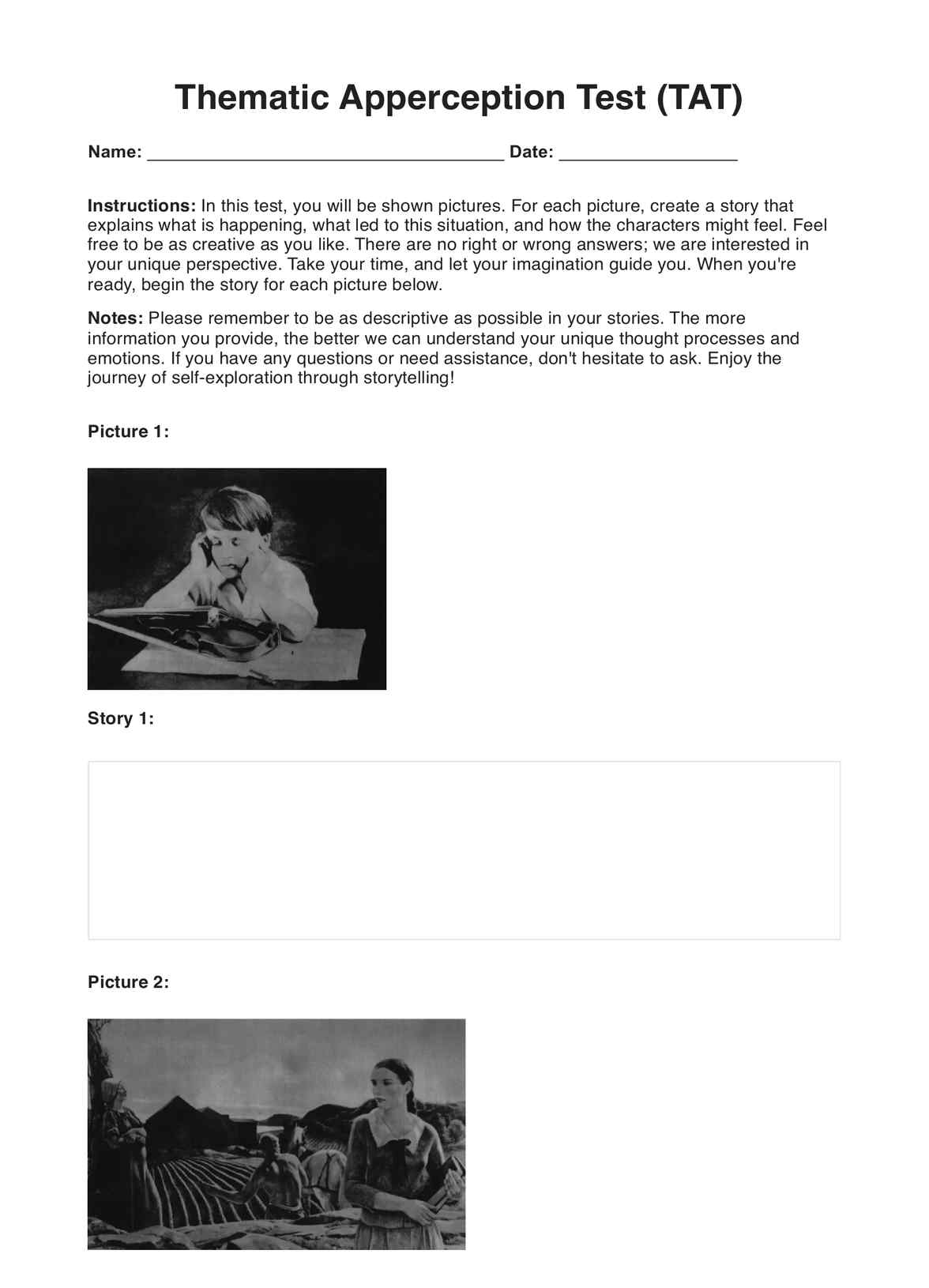The Thematic Apperception Test is a projective psychological test used to gain insight into a person's current concerns, motives, and personality traits. During the test, the individual is shown a series of ambiguous images, usually depicting people in various situations, and is asked to tell a complete story about each picture, including what led up to the event, what is happening in the moment, what the characters are feeling and thinking, and what the outcome will be.

Thematic Apperception Test
Need a tool for exploring your client's subconscious emotions? Download our Thematic Apperception Test template today.
Thematic Apperception Test Template
Commonly asked questions
A typical Thematic Apperception Test (TAT) session lasts about 45 to 60 minutes, allowing individuals sufficient time to create as dramatic a story as possible in response to ambiguous scenes presented in the test.
The primary benefits of taking the TAT include uncovering deep-seated, unconscious emotional conflicts and needs that an individual may not be able to articulate in a direct interview setting. It is highly useful in clinical settings to establish a rapport with the client and to gain a richer, more qualitative understanding of their interpersonal relationships, defensive mechanisms, dominant moods, and views of the world.
EHR and practice management software
Get started for free
*No credit card required
Free
$0/usd
Unlimited clients
Telehealth
1GB of storage
Client portal text
Automated billing and online payments











